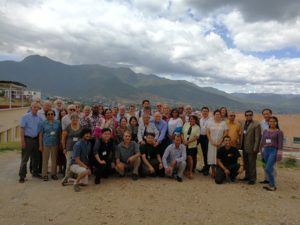Conservation & Society (Debate: Relocation from Protected Areas) Vol 4 No 3 July-September 2006
This special issue of Conservation & Society is devoted to the debate around relocation from protected areas. Initiating the debate, Rangarajan and Shahabuddin point out that displacement carried out to enhance levels of nature protection has often been accompanied by dispossession and impoverishment of the displaced people. When, where and how should relocation be done if at all is a question easier to pose than to answer. The views on displacement in conservation policy are sharply divided among biologists and social scientists. There are six other papers that take the discussion forward, covering a range of issues from different regions. Goodall focuses on these issues in the context of Australia and Southeast Asia. McElwee also deals with displacement and relocation problems in Southeast Asia. The international law perspectives on rights, risks and resistance are the subjects of the paper by Lustig and Kingsbury. Brockington and Igoe provide an exhaustive global overview on eviction for conservation. A substantial collection of eight stimulating papers, this issue of Conservation and Society, will surely be of interest to a wide readership.
The Economics and Politics of Resettlement in India Edited by Shobita Jain and Madhu Bala Delhi: Person Longman. 2006
This volume brings together fourteen essays by academics, researchers and practitioners with first-hand knowledge and experience of resettlement and rehabilitation processes in India. They provide theoretical and empirical insights from a variety of development sectors, including dams, road projects, forests and mining. Shobita Jain and Madhu Bala, the editors of this volume, are experienced scholars and have produced a useful resource for students, researchers, scholars, policy makers and NGOs. Professor Michael M Cernea has contributed to this volume a foreword with the title “Ethics and Economics in Resettlement Policy and Practice”.
People, Space and the State: Migration, Resettlement and Displacement in Ethiopia. Edited by Pankhurst, Alula and Francois Piguet . Addis Ababa: Addis Ababa University. 2004 This book is based the workshop jointly organized by the Ethiopian Society of Sociologists, Social Anthropologists and Social Workers (ESSSWA) and the United Nations Emergencies Unit for Ethiopia (UN-EUE) under the title ‘Settlement and Resettlement in Ethiopia: Population Displacement, Pastoralist Sedentarisation and Peace-Making’. The workshop was held in Addis Abba from 28 to 30 January 2003.
The issues discussed in the workshop certainly are urgent and call for much more attention than they have received so far. In 2003, some 150,000 people were resettled in four regions, and in 2004 the numbers moved more than doubled to over 326,000 people. It is estimated that more people, over two million, will require resettlement in next three years. The issues of refugees, returnees and peace making have given further urgency to complex resettlement problems afflicting Ethiopia.
With increased emphasis being currently put on plans for urban expansion, dam construction and development of parks, development-induced displacement in Ethiopia is bound to occur on a massive scale in the years ahead.
This volume from Ethiopia focused on an entire range of its resettlement issues is a major contribution to resettlement literature. The 33 papers in this volume, divided in ten parts, present not just a record of the views and findings of researchers, but also provide insights, suggestions and data which can be useful for debates on development options, and can become resources for government decision makers, donors, international and national agencies.
Dams, Rivers and Rights: An Action Guide for Communities Affected by Dams. By IRN. Berkeley, CA: International Rivers Network. December 2006.
Around the world, people are rising up against big dams. They are fighting to protect their rivers and their livelihoods from new dams. They are demanding compensation for problems caused by old dams. They are proposing better alternatives for energy, water supply and flood management. All of them are fighting for a voice in decisions that affect their lives.
Over the last 20 years, the international movement against dams has grown strong and had many successes. Some dams have been stopped. Better alternatives, such as small dams and water conservation, have been implemented. Communities have received better compensation. Some dams have been taken down. But new dams continue to threaten communities worldwide. International Rivers Network has created this action guide to empower communities threatened by new dams and to share ideas from the ongoing international anti-dam movement. International Rivers Network and other non-governmental organizations (NGOs) around the world are ready to help affected communities in their struggle. This guide provides information and tools to help decide how to respond to a proposed dam, how protect rights and how to demand a voice in decisions about dams.
Last Updated (Friday, 12 April 2013)


